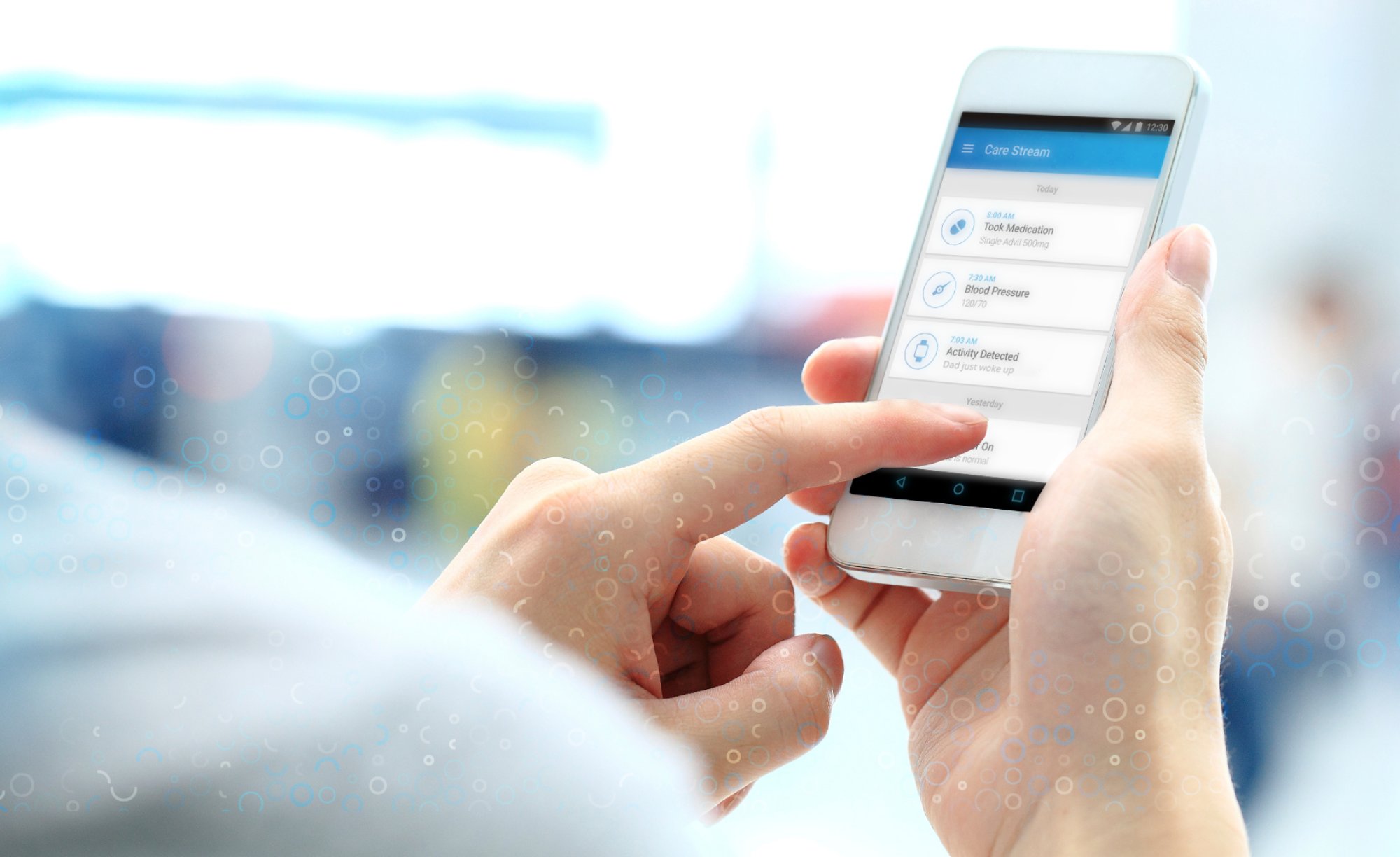
The Unsung Technologies of Digital Home Healthcare
It’s no secret that interest in better home healthcare is on the rise. Economic forces like value-based reimbursement and accountable care are pushing payers and providers to aggressively seek the lower costs of care at home. At the same time, a growing elderly population with chronic, age-related healthcare needs is demanding more and better care at home.
The Technical Bedrock of Digital Home Healthcare
If economics and demographics are the driving forces in home healthcare, technology is the engine revolutionizing how it is being delivered. Three technology trends, in particular, are the foundation behind this revolution: 1) ubiquitous wireless network connectivity, 2) wide-spread use of smartphones, and 3) a growing array of connected, sensor-enabled devices that can measure and track a variety of personal wellness data.
Smartphones are an encapsulation of all three of these technologies in a single form factor. They are connected, portable, personal, and packed with sensors that record step counts, location, ambient temperature, and other data relevant to patient activity and wellness. They are also, first and foremost, a communication platform. This explains why there are so many smartphone apps for healthcare. According to IMS Health, more than 165,000 mobile health or “mHealth” apps are available in the Apple and Android app stores.
Smartphones are general purpose devices and intrinsically limited when it comes to tracking healthcare data. Over the past few years, hundreds of specialty devices have come on the market that combine wireless connectivity with small and inexpensive sensors to capture and record vital data points, like blood pressure and glucose level, movement and activity, and even stress levels extracted from patients’ voices. All these devices are making it possible to gather a detailed and complete picture of patient wellness at home.
Making it Real – Digital Home Health Applications
A principal motivation of digital home healthcare, along with keeping costs of care low, is improving overall quality of care and outcomes. Quality healthcare happens when medical professionals, caregivers, and patients themselves have access to better and more timely insights into patient wellness. The three core technologies of digital home health combine to provide unprecedented access to patient wellness data and a platform to communicate and coordinate care around these insights. This combination of access to data, connectivity, and communication tools enables mHealth applications for:
- Patient education and engagement
- Medication and treatment adherence
- Condition monitoring and intervention
- Care coordination and management
Completing the “Last Mile” in Digital Health
While connectivity, mobile apps, and smart, sensor-enabled devices enable digital home healthcare, a review of the list above suggests that other technologies are required to realize a complete digital home healthcare solution. For example, the ability to deliver the right educational content to a patient at the right time within an mHealth application requires technology for curating the content and setting the rules for its delivery.
More broadly, specific and often overlooked technologies are required to bring to life the monitoring, education, engagement, and collaboration features required in most digital home healthcare applications. Selecting a platform that has the following technologies built in will make delivering a single cohesive digital care experience much easier:
- Social computing
The success of social media applications like Facebook, Twitter, and others have set the digital standard for how people communicate. From this world come important technologies and capabilities that are relevant to coordinating care, managing intervention, and engaging patients at home in their own care; capabilities like messaging, activity feeds, content sharing, etc.
- Analytics
Analytics technology processes data from apps and devices to surface insights and inform the actions that should be taken (“actionable insights”). When used in a home healthcare setting, analytics help to identify risks, reduce unnecessary emergency hospital visits for chronic care, and prevent re-admissions for post-acute care.
- Content and experience management
Technologies for managing content and user experience are mature in the digital marketing world and are used to manage, monitor, measure visitors to consumer web sites and mobile applications. Sometimes lumped under the category of “customer engagement” technologies, these same technologies play an important role in digital home health and “patient engagement”. They help simplify the creation and management of rules for patient engagement and help align the patient’s home healthcare activities to an established, personalized care plan by delivering the right information at the right time – when it’s needed most.
Plan Accordingly
Wireless connectivity, smartphones apps, and smart, connected devices are the current superstars of modern digital home health, but other technologies are also critically important to consider for any viable mHealth application. Organizations that think through the complete requirements of their digital healthcare application and select an appropriately complete enabling platform will lead the way in transforming home health.
About this Post
This post summarizes a September 2016 eBook titled The Digital Technologies Revolutionizing Home Healthcare. Access the full eBook here.

